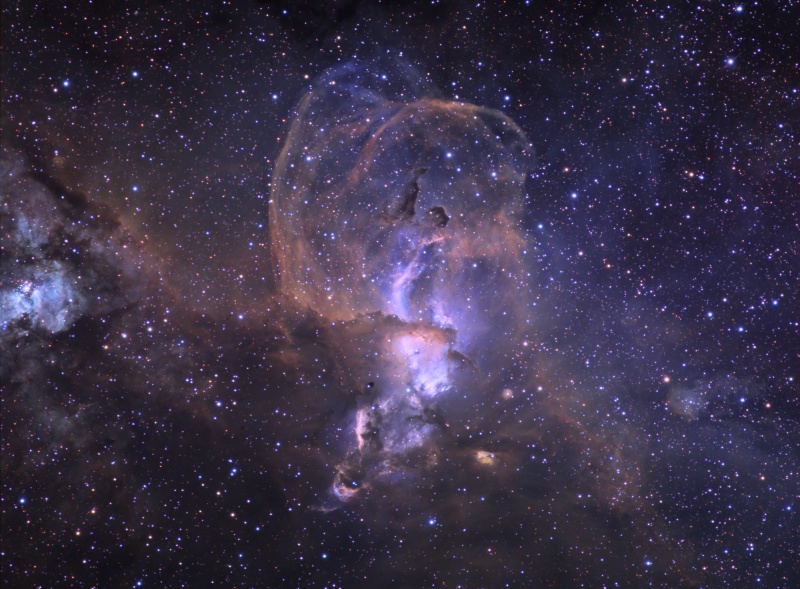Explanation: An intriguing and beautiful nebula, NGC 3576 drifts through the Sagittarius arm of our spiral Milky Way Galaxy. Within the region, episodes of star formation are thought to contribute to the complex and suggestive shapes. Powerful winds from the nebula's embedded, young, massive stars shape the looping filaments. The dramatic false-color image also highlights the contributions of hydrogen, sulfur, and oxygen, energized by intense ultraviolet radiation, to the nebular glow. But the glow also silhouettes dense clouds of dust and gas. For example, the two condensing dark clouds near the top of the picture offer potential sites for the formation of new stars. NGC 3576 itself is about 100 light-years across and 9,000 light-years away in the southern constellation of Carina, not far on the sky from the famous Eta Carinae Nebula. Near the left edge of the picture is NGC 3603, a much larger but more distant star forming region.
1999 2000 2001 2002 2003 2004 2005 2006 2007 2008 2009 2010 2011 2012 2013 2014 2015 2016 2017 2018 2019 2020 2021 2022 2023 2024 2025 |
Yanvar' Fevral' Mart Aprel' Mai Iyun' Iyul' Avgust Sentyabr' Oktyabr' Noyabr' Dekabr' |
NASA Web Site Statements, Warnings, and Disclaimers
NASA Official: Jay Norris. Specific rights apply.
A service of: LHEA at NASA / GSFC
& Michigan Tech. U.
|
Publikacii s klyuchevymi slovami:
emission nebula - star formation - emissionnaya tumannost' - zvezdoobrazovanie
Publikacii so slovami: emission nebula - star formation - emissionnaya tumannost' - zvezdoobrazovanie | |
Sm. takzhe:
Vse publikacii na tu zhe temu >> | |
